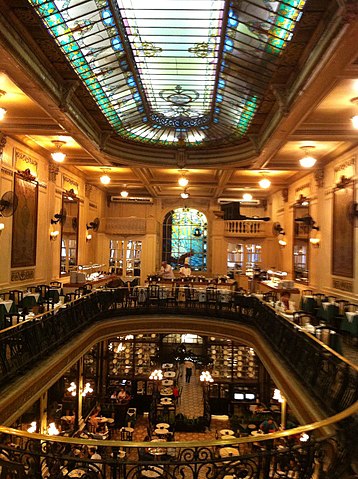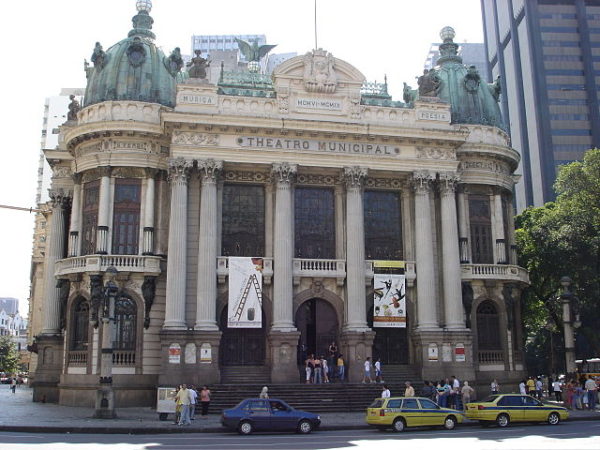Rio de Janeiro is known as cidade marvailhosa in Portuguese. In English, this translates into marvellous city. The appellation is richly deserved. Rio exhausts superlatives.

Famous for its frothy tropical exuberance and joie de vivre, Rio is crammed into several verdant valleys and defined by the Serra da Carioca, a steep green mountain range, and Bahia da Guanabara, a placid bay dotted with uninhabited islets.
When you add its sandy beaches and constant summer weather to the mix, the combination is irresistible.
Founded by the Portuguese explorer Gaspar de Lemos 515 years ago, and serving as Brazil’s capital from 1763 to 1960, Rio is best seen from two spectacular vantage points — Pao de Acucar (Sugar Loaf) and Corcovado.

Connected by cable cars that whisk visitors to the top in minutes, Sugar Loaf is 396 meters above sea level and Rio’s signature sight. Reached by cable car as well, Corcovado is still higher. Rising 710 meters from a 33-square kilometre rainforest protected as a nature reserve, Parque Nacional de Tijuca, Corcovado is crowned by Christ the Redeemer, a 13-storey statue that has stood here, with welcoming outstretched arms, since 1931.
The vistas from both sites are exquisite, especially on clear sunny days: the curvaceous beaches, the iconic neighbourhoods of Copocabana and Ipanema, the shimmering bay, the downtown core with its clusters of skyscrapers and colonial buildings, and the Jardim Botanico, the botanical gardens framed by lofty Imperial palm trees.

Rio, in effect, is really a tale of two cities, comprising the zona Sul (southerly), where the well-to-do reside in luxury condos and where tourists congregate, and the zona Norte (northerly), where the working classes eke out an existence.
The favelas (shantytowns) of Rio, incongruously occupying the highest terrain, spill down into middle and upper-middle class neighbourhoods, a jarring reminder of Brazil’s grinding Third World poverty.
The beaches, cafes, restaurants and hotels of Copocabana and Ipanema are the stuff of legend, burnished by a 1940s Hollywood movie (Flying Down to Rio) starring Fred Astaire and Ginger Rogers, and a local song (Girl from Ipanema).
On a typical day, the beaches are usually crowded with bathers and sun worshippers, some taking cover under an expanse of blue and yellow umbrellas.

Joggers and pedestrians share sidewalks decorated with wavy black and white mosaics. Cyclists glide by in adjacent bike lanes, reinforcing the perception that Cariocas — Rio’s residents — are masters of a healthy outdoor life.
In their haste to immerse themselves in Copocabana’s and Ipanema’s ambience, visitors all too often overlook Rio’s colonial quarter, which is well worth exploring. Start with Largo do Boticario, or Apothecary Square, hidden away in quiet nooks and shaded by a tangle of trees and foliage. The neo-colonial buildings, painted in shades of pink, yellow and pale green and trimmed with white and blue tiles, summon up the spirit of 19th century Brazil.
The Royal Portuguese Reading Room, finished in a Flemish Gothic facade and adorned with statues of Portuguese explorers such as Vasca de Gaza and Pedro Alvarez Cabral, is stacked with wall-to-wall shelves to the ceiling. It’s the repository of 300,000 books on every conceivable facet of Brazilian history.

Nearby, on a narrow and congested cobblestone street, is the Confeitaria Colombo, a two-storey monument to Belle Epoch architecture. It’s rich with Belgian mirrors, Brazilian rosewood showcases, Italian marble benches, ornate light fixtures and period furniture.
Strong Brazilian coffee and delicious pastries are served on the first floor. The buffet, dispensing a variety of local and regional dishes, is on the upstairs level.

Rio’s architectural piece de resistance may well be the Teatro Municipal, the early 20th century theater modelled after the Paris Opera. Resplendent with sweeping marble staircases, stained glass ceilings, sparkling chandeliers, bevelled crystal windows, heavy bronze doors and Art Nouveau statues, it can seat 2,361.
Brazil’s largest theater, it epitomizes an era of excess in Brazil’s development as a South American titan.

